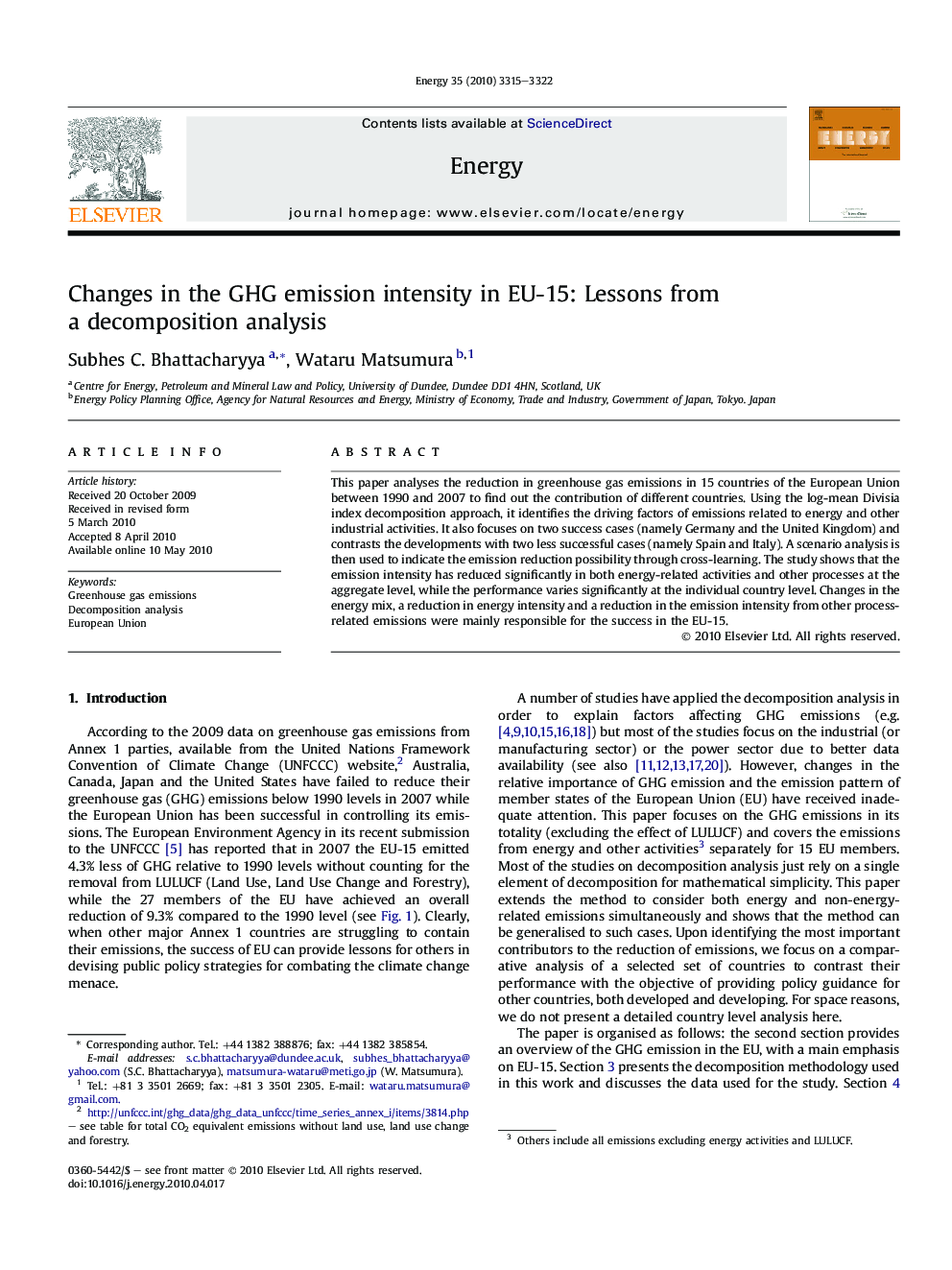| Article ID | Journal | Published Year | Pages | File Type |
|---|---|---|---|---|
| 1734994 | Energy | 2010 | 8 Pages |
This paper analyses the reduction in greenhouse gas emissions in 15 countries of the European Union between 1990 and 2007 to find out the contribution of different countries. Using the log-mean Divisia index decomposition approach, it identifies the driving factors of emissions related to energy and other industrial activities. It also focuses on two success cases (namely Germany and the United Kingdom) and contrasts the developments with two less successful cases (namely Spain and Italy). A scenario analysis is then used to indicate the emission reduction possibility through cross-learning. The study shows that the emission intensity has reduced significantly in both energy-related activities and other processes at the aggregate level, while the performance varies significantly at the individual country level. Changes in the energy mix, a reduction in energy intensity and a reduction in the emission intensity from other process-related emissions were mainly responsible for the success in the EU-15.
